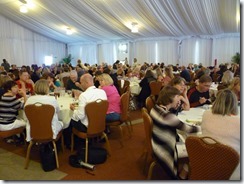Session Two: Yo! Here I am! Buy Me!
Novelists, Inc. Conference St. Pete Beach Oct. 2014
The general reader mindset changed with the advent of lower-priced, self-published books. One speaker encouraged higher prices than $.99. For that low price, he feels readers aren’t as vested and are more likely to give a lower rating. Also, the reader may not stick around to read a $.99 book as opposed to a higher priced book. Customers like lower prices, but that doesn’t mean they won’t pay more for what they perceive as value. Millions of customers are willing to pay as much as $15 per book. Traditional publishers can price lower and indie pubs can price higher. These two have to come together.
You can use pricing as a discovery tool. Price lower for your backlist titles or for one day as a marketing promotion. BookBub is where readers download free or cheap books to discover new authors. If a reader likes the book, they will buy other books by that author. The audience who subscribes to BookBub trusts them to offer books of a certain quality. Multi-author box sets can also drive discoverability. [Author’s Note: Also check out The Fussy Librarian]
So the $.99 deal is a great way to meet readers and get acquainted. Don’t feel you have to price every book as low as $2.99 or $3.99. You must have a pricing strategy. For example, make the first book permafree and price the others at a higher rate. Making the first book in your series free helps all your sales.
Kobo promotes the first free in series. They say an average of 54% of people who finish reading a book will go on to read more books by that author. Kobo curates the front-page material for their website.
Books in a series will sell better than standalones. But you don’t have to have books in a series per se if you can link them in a smart way. For example, one author had “the first kiss club” for clean, teen romance although each book is a standalone.
Your e-book is a living document, so put links in your new books to your backlist titles. The back matter is very important.
An average of 18 audio books is consumed by Audible subscribers in a year.
One speaker feels that subscription readers (for services such as Kindle Unlimited, Oyster, or Scribd) are a different market than readers who would buy your book.
It’s not easy for librarians to find indie authors on Overdrive. But another speaker said profits from the library market are relatively small compared to the retail market for successful indie authors. The following services were mentioned regarding libraries: Overdrive and BiblioBoard.
Lunch was served next, tempting us with deli sandwiches and an array of desserts. We had time to schmooze with friends before moving on to the afternoon panels.
Here I am with Ann Meier from Florida MWA and there’s Leanne Banks at the dessert table.
See all of my Photos in the Ninc album on my Facebook Page
Note: Any errors in this article are due to my interpretations. As many ideas flew back and forth during each session, I will mention what I gleaned from the panels, and you can take from it whatever serves your needs.



